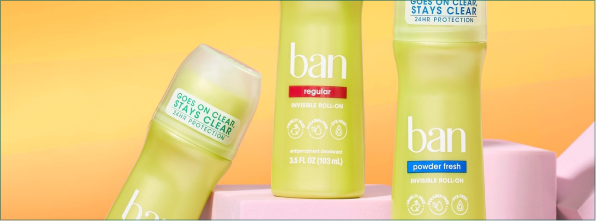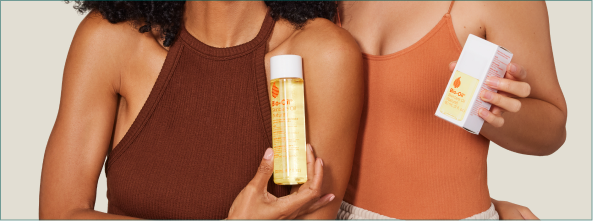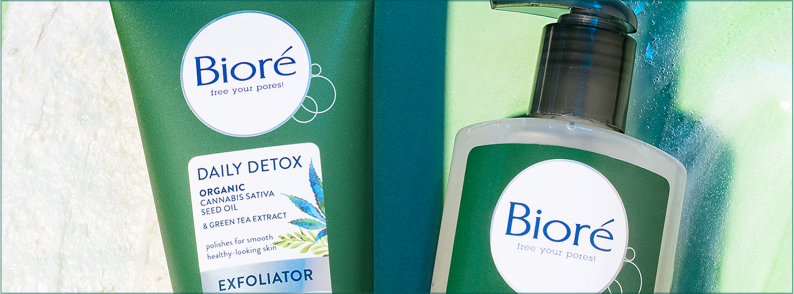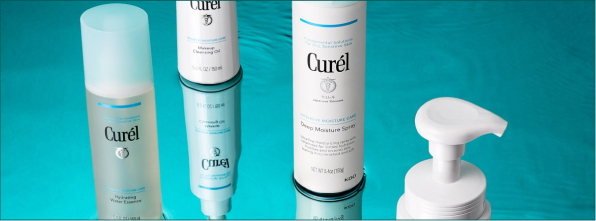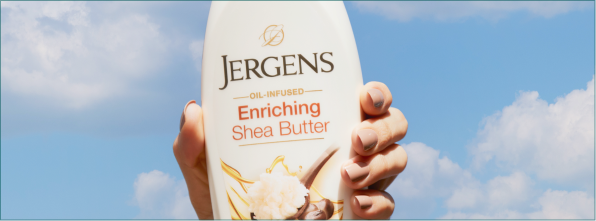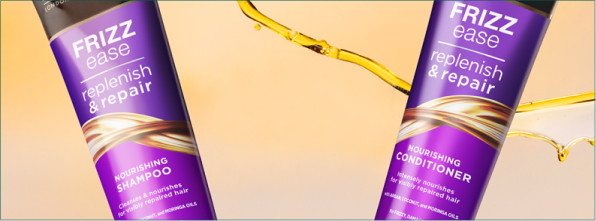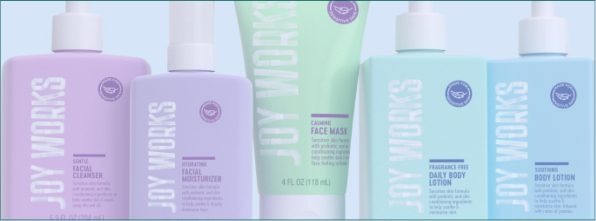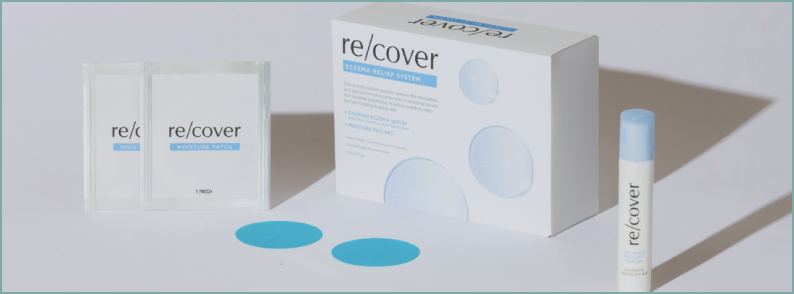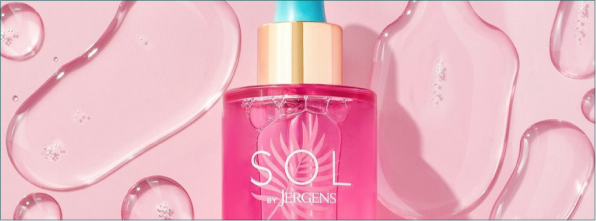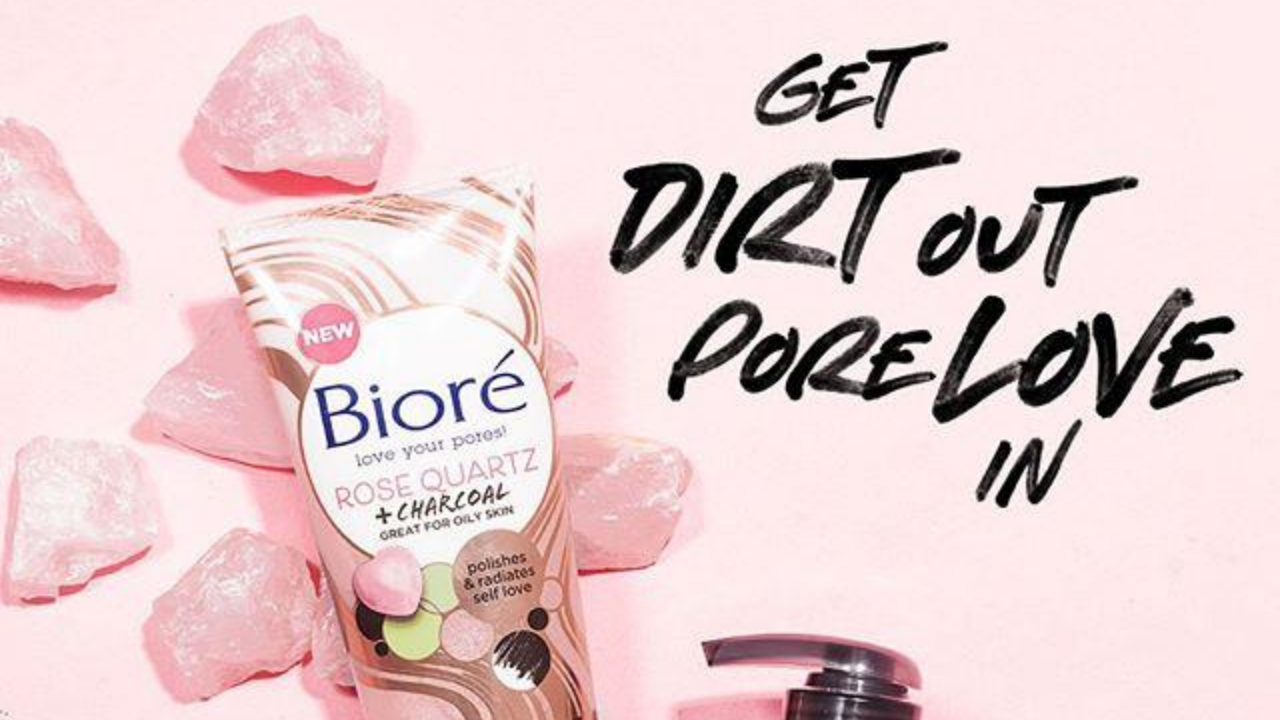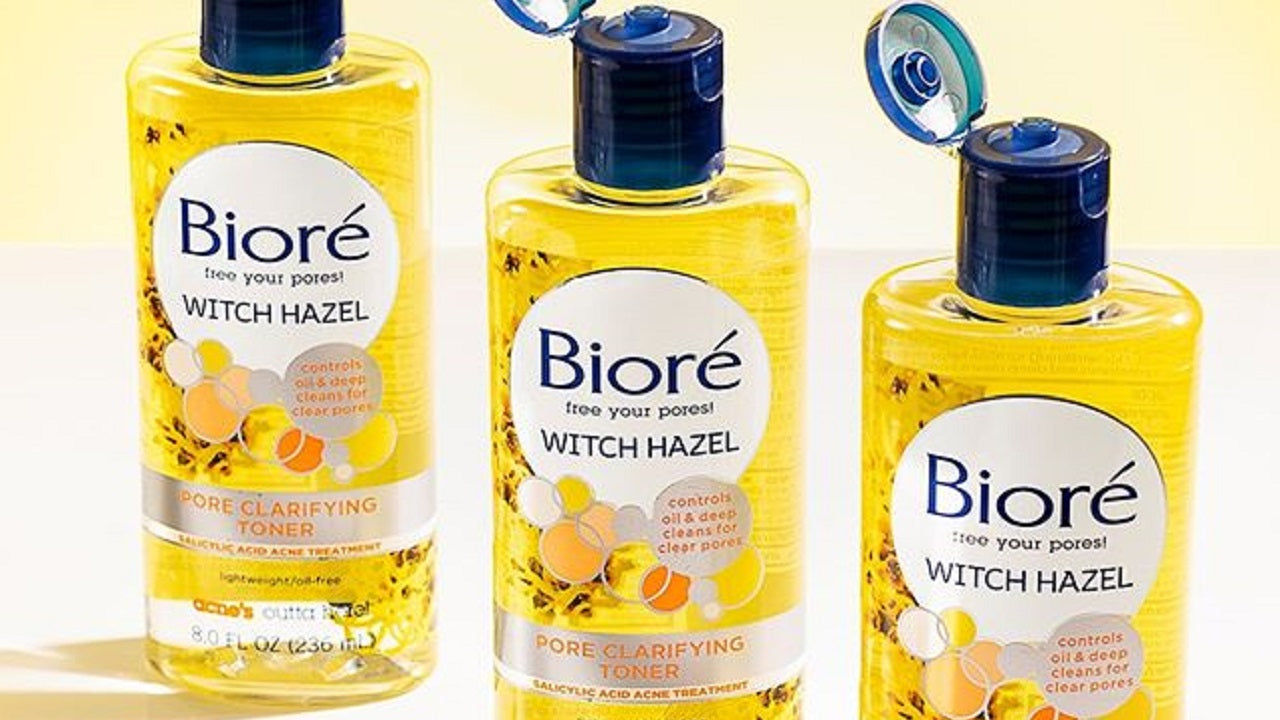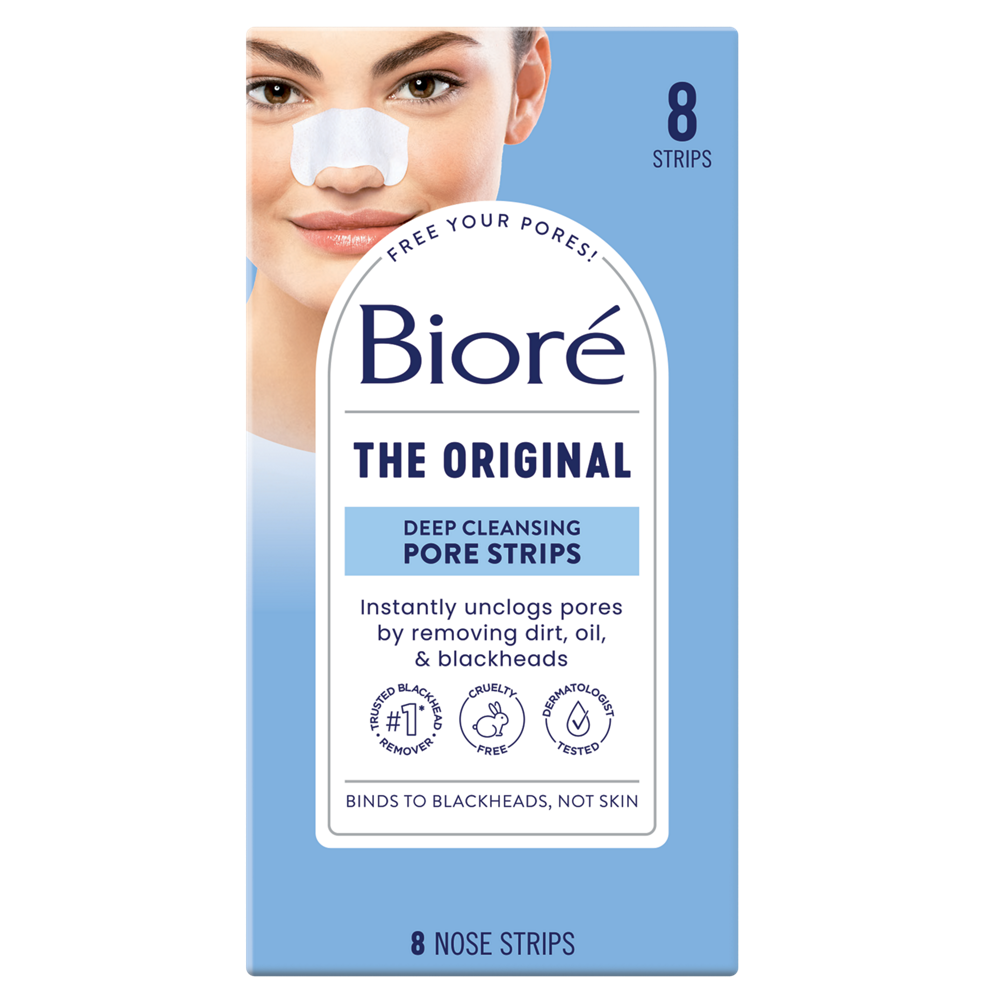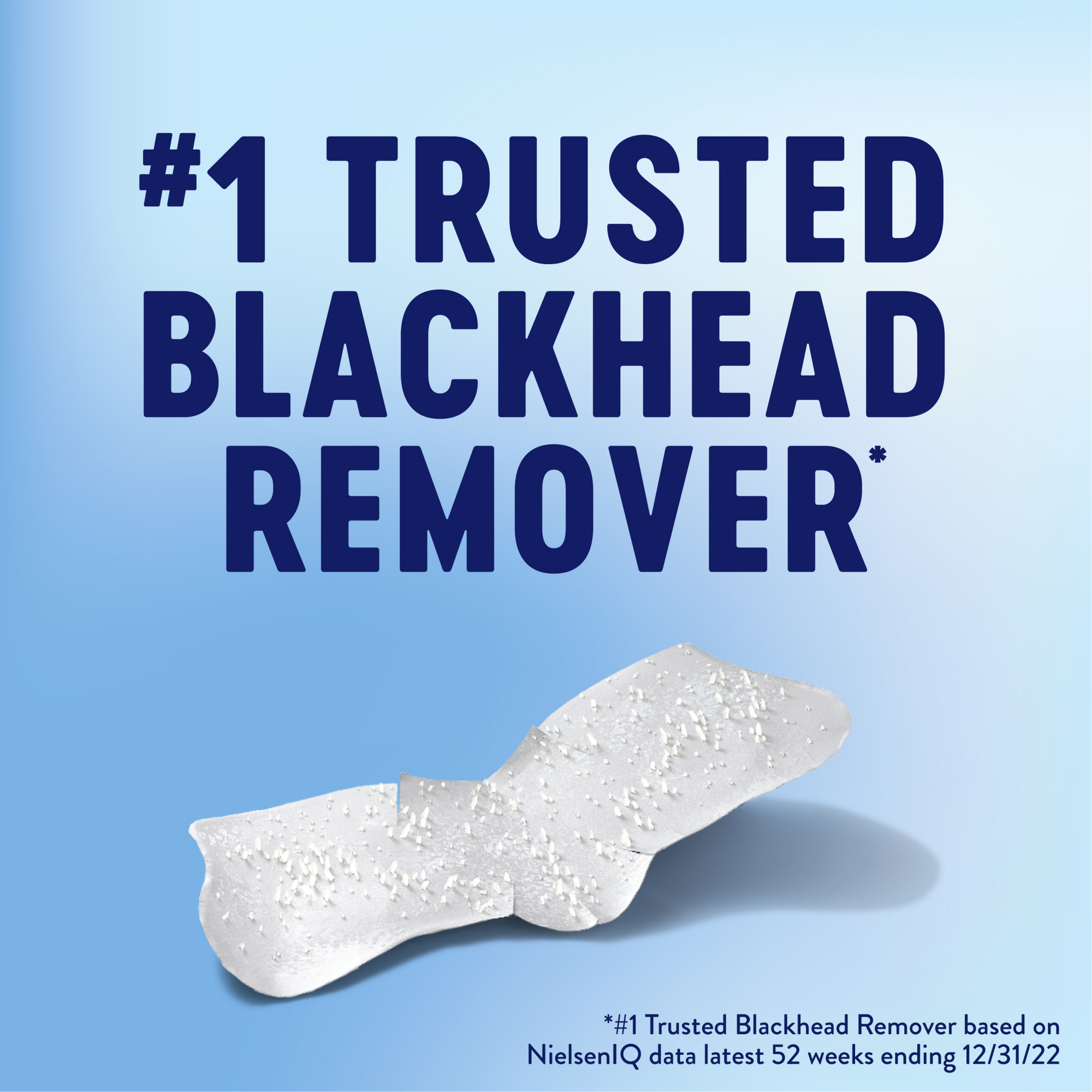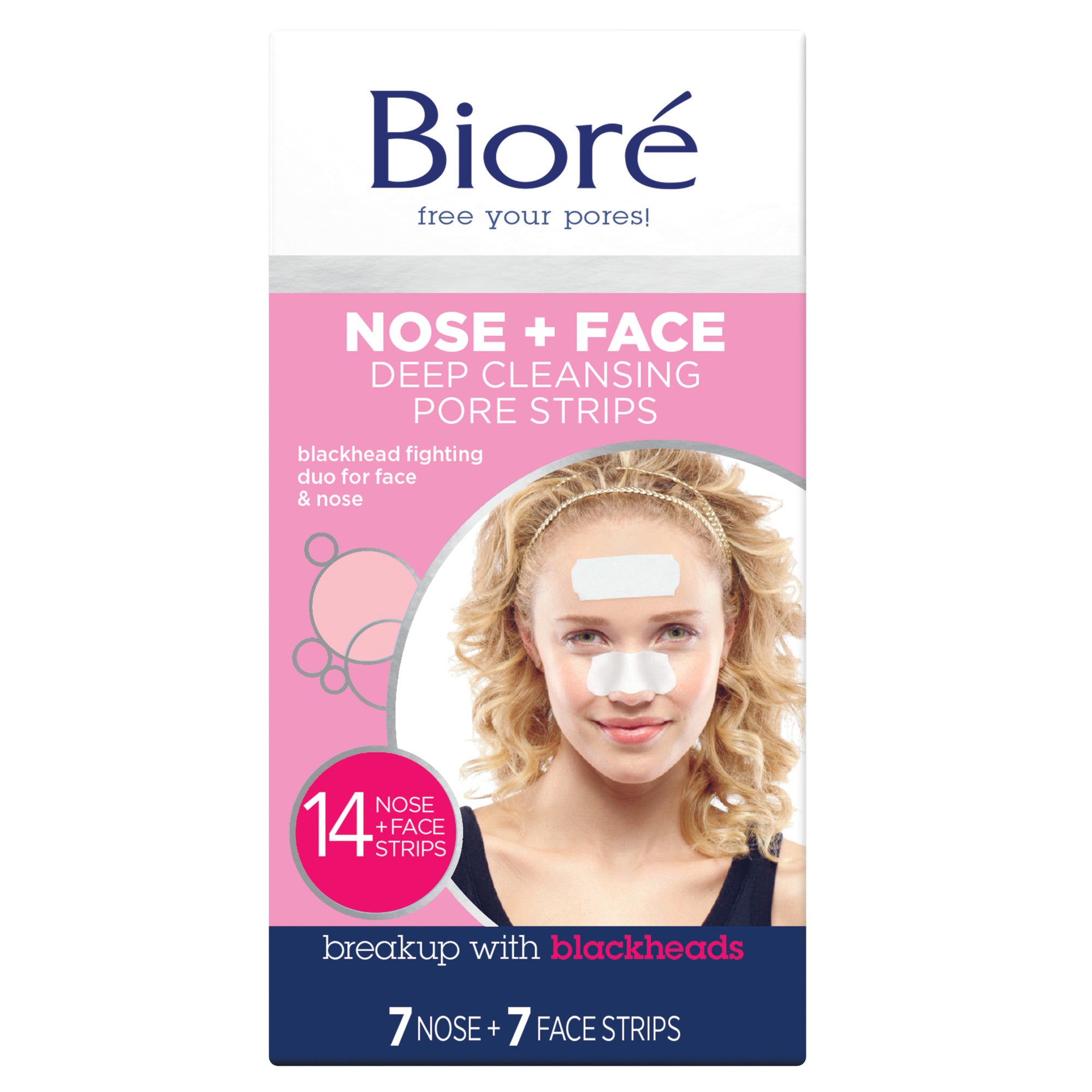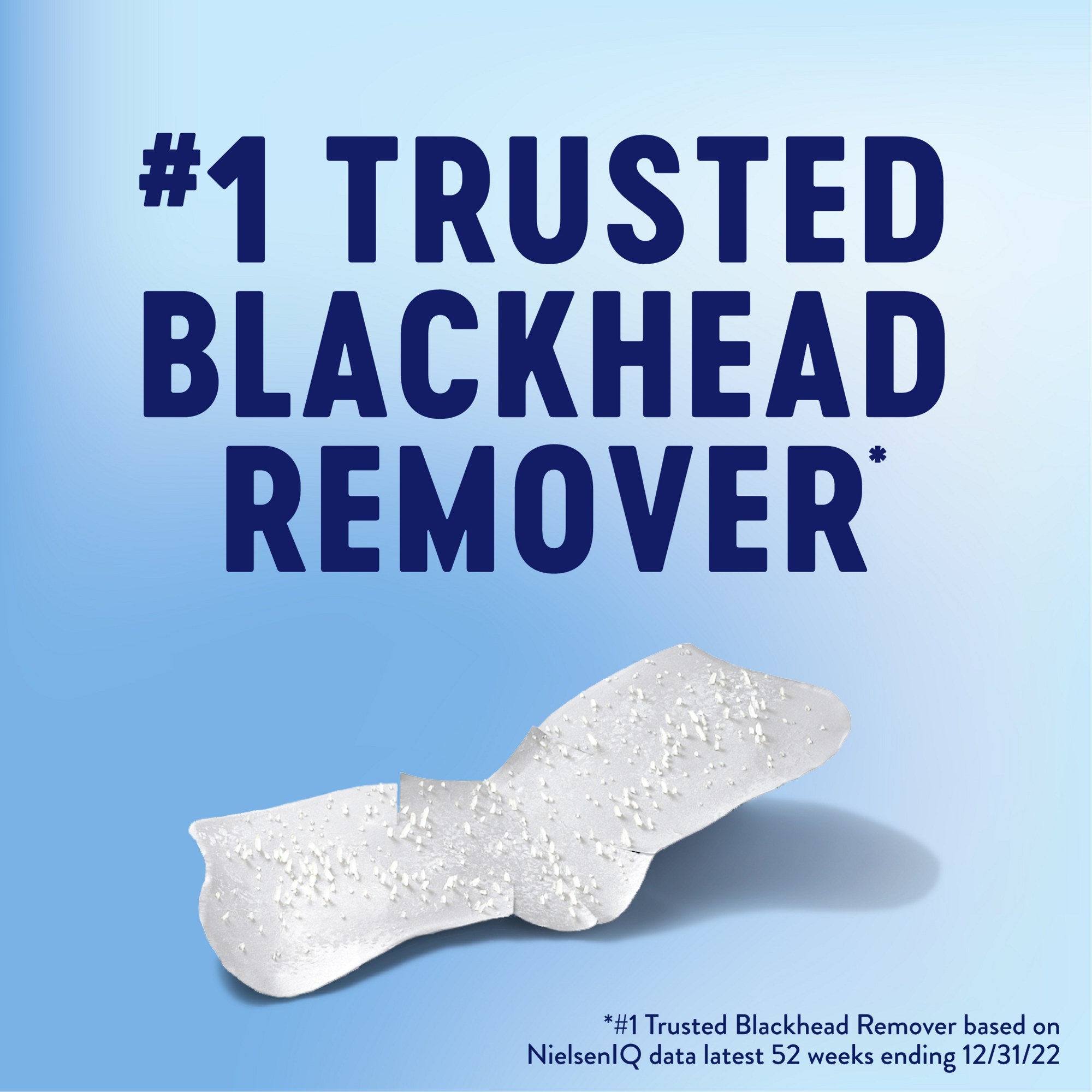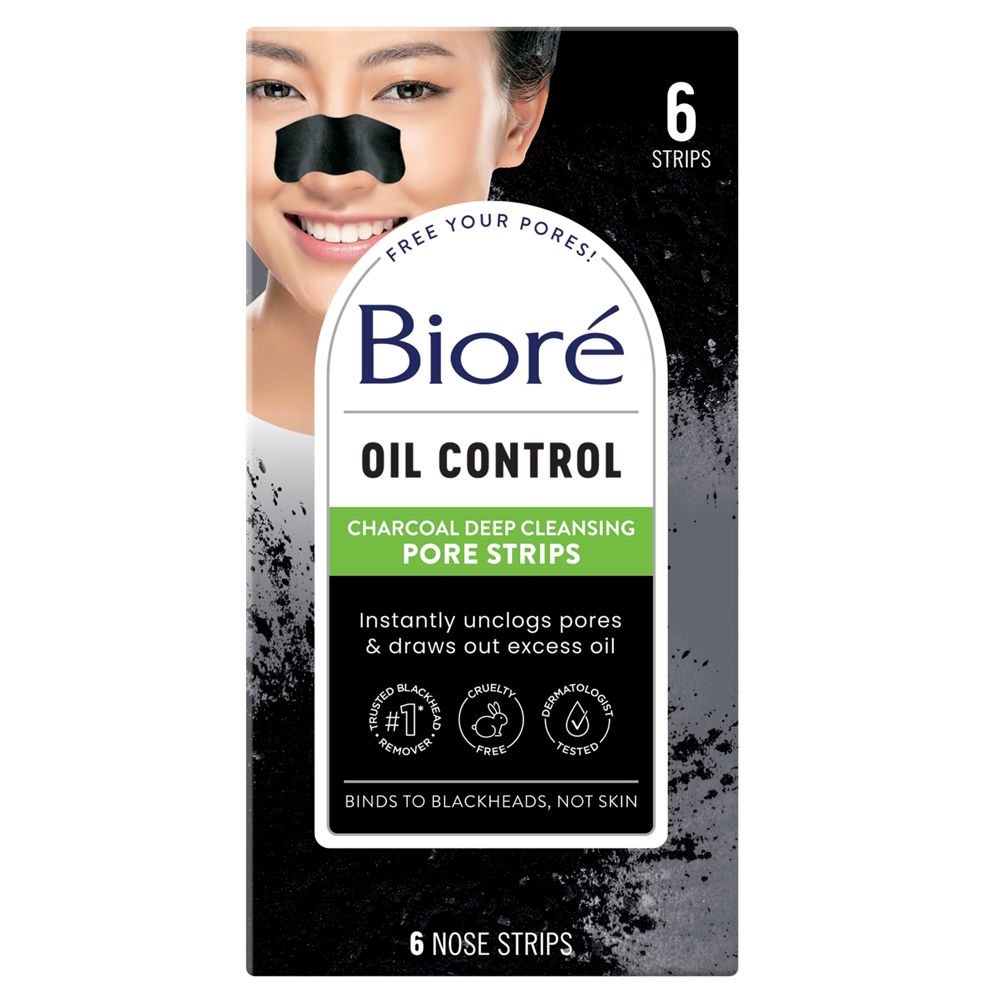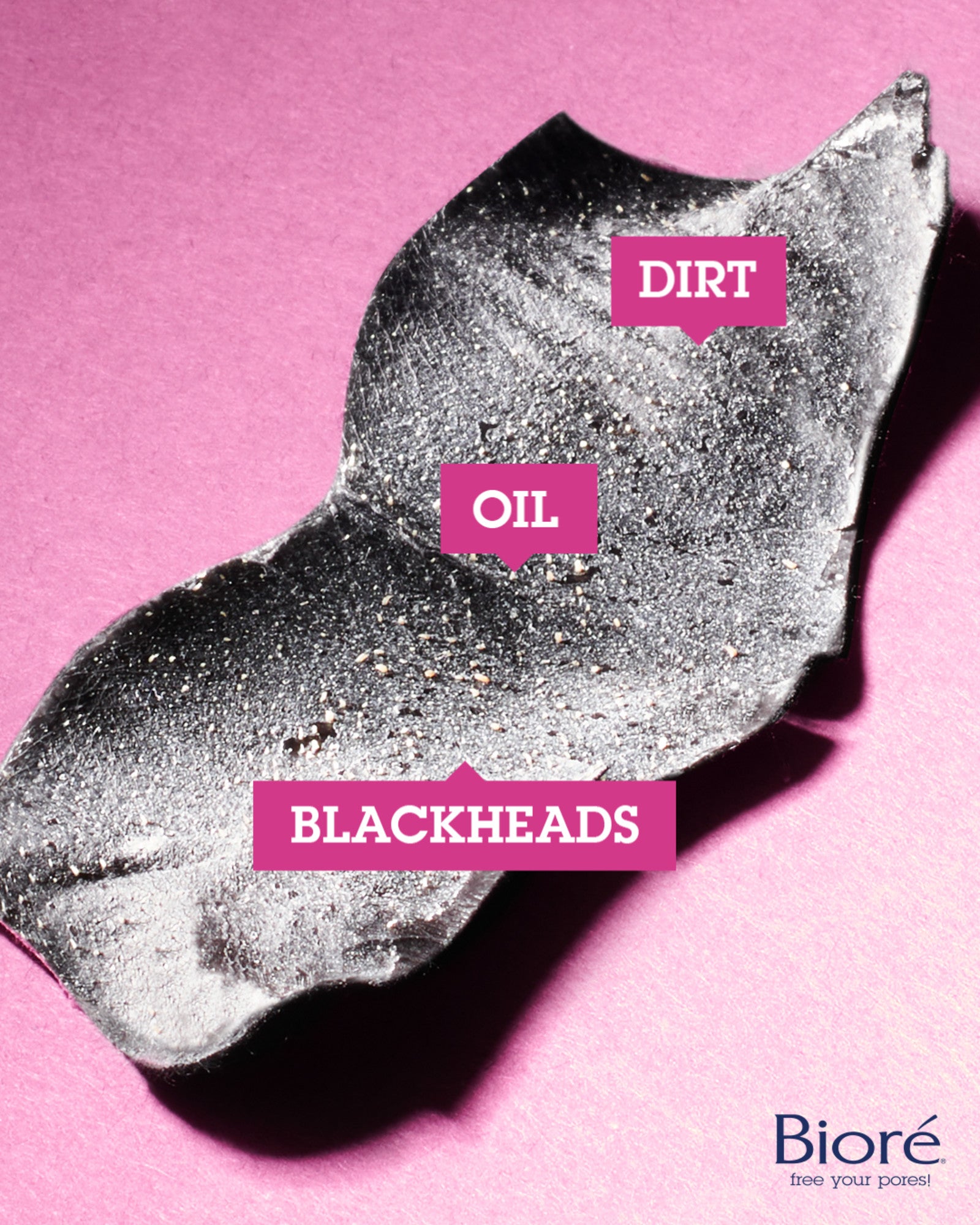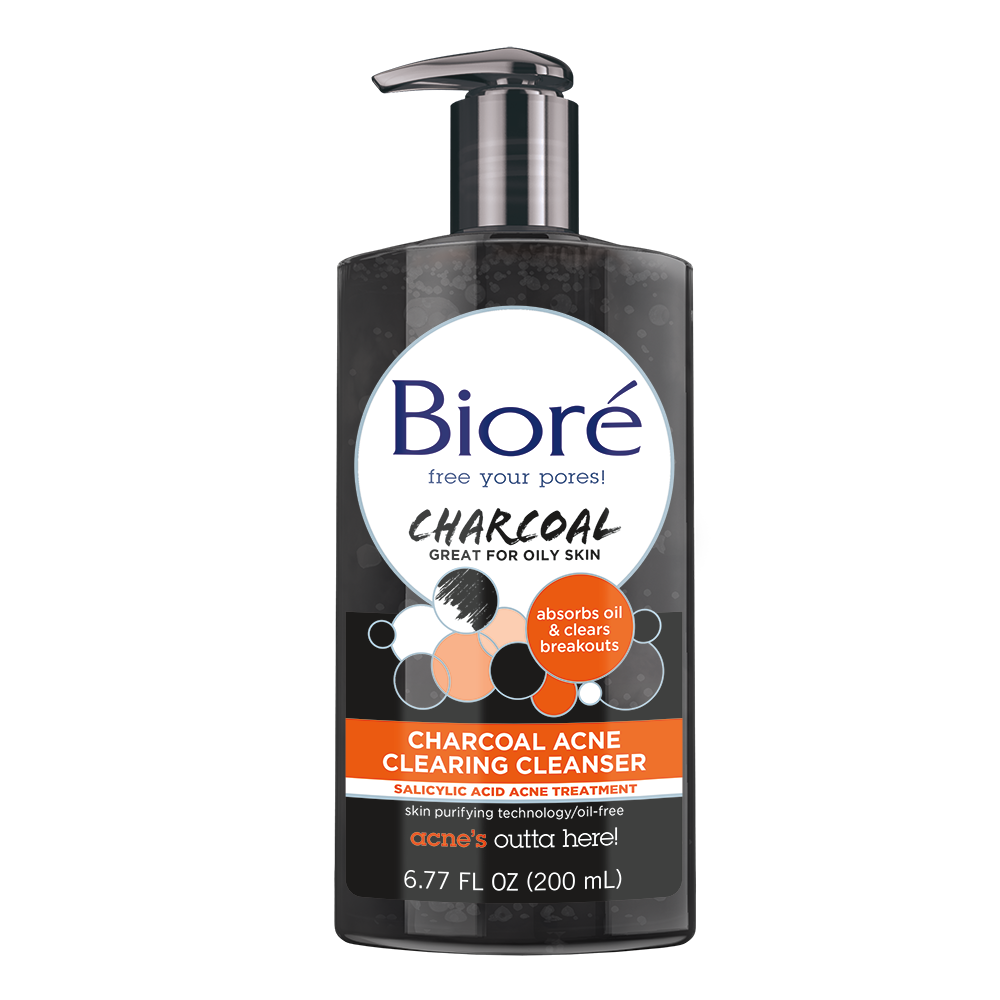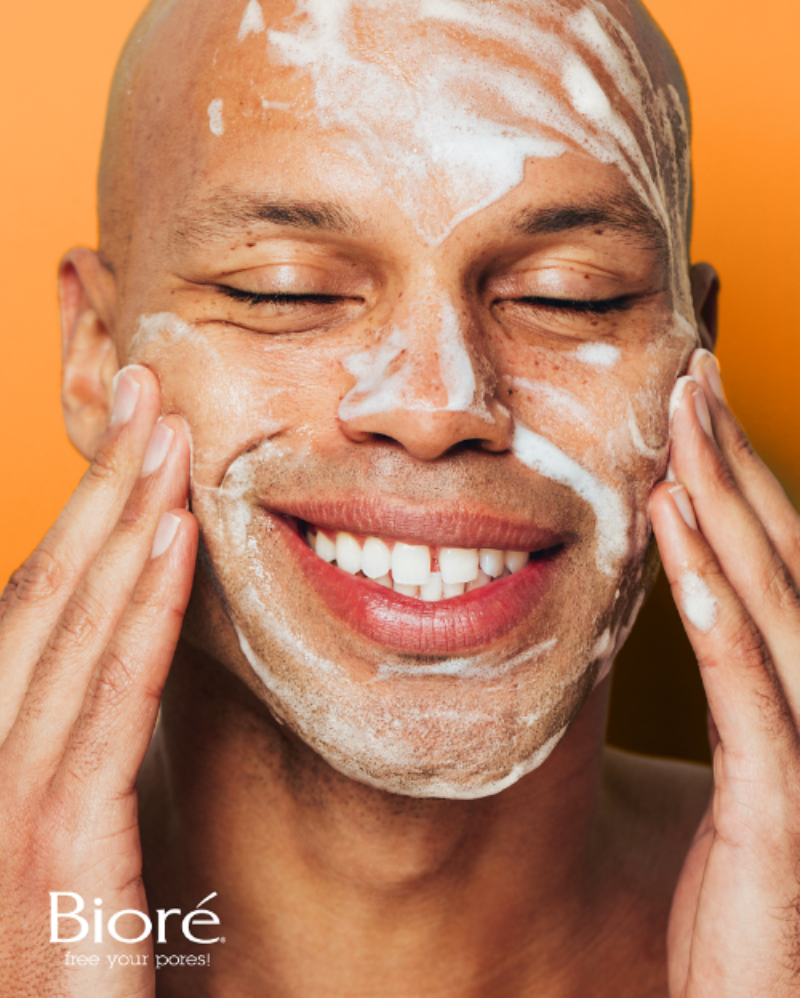Skincare Routine for Oily Skin

Almost everyone has oily skin from time to time. Your skin naturally produces oil to hydrate and protect your skin, so some oil is beneficial! The problem arises when an excess of oil accumulates on your skin. Excess oil can lead to clogged pores, blackheads, and other blemishes. The key to preventing oily skin is to find a skincare routine that removes excess oil without drying out your skin.
Oily skin is most common in your T-Zone. The T-Zone comprises of the skin on your forehead, nose, and chin. For those with oily skin, your T-Zone and other parts of your face may be excessively shiny or oily throughout the day. If your oily skin leads to breakouts, look for products specially designed for your skin type, like oil-free and non-comedogenic products. This guide will help you learn about the top causes of oily skin and how to find the best skincare routine for oily skin.
Shop Biore Basics
How to Do a Skin Type Test for Oily Skin
There are four major skin types: normal, combination, oily, and dry skin. Normal skin means that your skin is neither too oily nor too dry. Combination skin means that your skin sometimes produces excess oil and you may have enlarged pores in your T-Zone. Oily skin means that your skin tends to overproduce sebum and you may also have enlarged pores. Lastly, dry skin means that your skin underproduces sebum, leading to dry, flaky skin.
Oily skin means that your skin tends to overproduce sebum and you may also have enlarged pores.
If you want to get the most out of your skincare routine, the first step is figuring out if you truly have oily skin. This means you'll need to do a skin type test. Don't worry, it's easier than it sounds! Here are the steps for doing a skin type test for oily skin:
- First, cleanse your face following your normal skincare routine, but avoid using any products after drying your skin.
- When your skin is dry, check your T-Zone (the area that makes up your chin, nose, and forehead) for excess oil, which can be targeted with t-zone skincare products.
- Use a blotting paper or a tissue to blot your skin. If you notice excess oil coming off on the paper, you have oily skin.
- Even if your skin isn't oily yet, you might notice that you have large pores. In this case, check your skin for excess oil an hour later. Large pores can also be an indicator of an oily skin type.
Skincare Routine for Oily Skin
The key to managing your oily skin, or really any time you want to up your skincare game, is a consistent skincare routine.
Just because you have naturally-oily skin doesn’t mean you can’t take effective steps for clear, healthy skin. If you have oily skin, you’ll need to form a regular skincare routine that helps remove excess oil from your skin without overdrying it.
Step 1: Cleanse Your Skin in the Morning (and at Night)
As you sleep, residue from your pillowcase and products in your hair can transfer excess oil and pore-clogging material to your face. Right after you wake up, use warm water to open your pores followed by a gentle daily cleanser to give your face a thorough scrub. Make sure to also cleanse your face at the end of the day to remove any buildup of dirt, debris, and oil. Look for a cleanser with salicylic acid to deep clean your skin and clear your pores.
Step 2: Exfoliate Skin to Prevent Buildup
Gentle exfoliation is one of the most important skincare steps for oily skin. The combination of excess oil and large pores can cause buildup and dead skin cells to clog your pores. Use a face scrub with salicylic acid a few times a week to remove pore buildup and help prevent acne and breakouts.
Step 3: Use Toner to Refine Your Pores
Applying toner is an essential step for controlling oily skin. Toner is a lightweight skincare product that can help shrink the appearance of pores and control oil. Toners often have skin-friendly ingredients like Witch Hazel and Salicylic Acid to help reduce oil and prevent acne.
Step 4: Apply Moisturizers to Hydrate Your Skin
After cleansing, exfoliating, and toning your skin, apply a lightweight moisturizer and sunscreen to protect and moisturize your skin during the day. Look for non-comedogenic (or non-pore-clogging products) to avoid clogging your pores. While it may seem counterintuitive to add more moisture to oily skin, consistently moisturizing prevents your skin from going into overdrive when it becomes too dry and compensates with an over-production of oil.
While it may seem counterintuitive to add more moisture to oily skin, consistently moisturizing prevents your skin from going into overdrive when your skin becomes too dry and compensating with an over-production of oil.
Causes of Oily Skin
Figuring out what is causing your oily skin is the first step to managing it. The top causes of oily skin are:
- Current Skincare Routine: One of the factors is how often you wash and exfoliate your skin. You may think washing and exfoliating your skin throughout the day helps you to get rid of excess oil. In reality, overwashing or over-exfoliating can make oily skin worse. As you strip your skin's natural oils, it goes into overdrive to produce more sebum or oil to protect your skin.
- Genetics: Oily skin occurs for many reasons, but genetics is one of the most common. Just like hair color and eye color, skin types tend to run in families. If the members of your immediate family had oily skin when they were younger, you're more likely to have the same issue.
- Age: Of course, your age plays a factor, too. Even if your skin is oily now, you must reevaluate as you age. As you age, skin loses collagen and other proteins, which can cause your pores to stop producing as much oil. For example, people in their 30s often need different skincare routines than they needed as a teenager.
- Large Pores: If you have large pores, you may deal with more oil than people with average or small pores.
- Climate: Outside elements, like humidity and temperature, can factor into the amount of oil your skin produces. One major factor is where you live. If you live in hot and humid climates, your skin may produce more oil than people in cool and dry climates. Regardless of where you live, you may also notice that your skin produces more oil during the summer.
"In reality, overwashing or over-exfoliating can make oily skin worse. As you strip your skin's natural oils, it goes into overdrive to produce more sebum or oil to protect your skin."
More Tips for Oily Skin
1. Remove All Your Makeup at the End of the Day
Your evening skincare routine is just as important as your morning one. If you have makeup on, you'll need to start your evening routine with a makeup remover.
2. Cleanse Gently
It is important to deep clean and remove dirt, oil, and debris, but make sure you are gentle on your skin so that you don’t irritate it. Try a clean detox gentle cleanser.
3. Use a Charcoal or Clay Mask for 10 Minutes of Me Time
Facial masks draw out dirt and oil to help deep clean your pores. Using a face mask with ingredients like charcoal can help remove excess oil from your skin for a tingly-smooth pore detox.
4. If You Have Blackheads, Safely Remove Them With a Pore Strip
Excess oil sometimes leads to clogged pores as well. If your oily skin is resulting in blackheads, use a pore strip to safely get rid of blackheads without having to pick or squeeze your skin.
If You Have Whiteheads or Pimples, Promote Healing With Blemish Patches
Excess oil and sebum trapped in your pores can also result in whiteheads or pimples. Use a hydrocolloid blemish patch over your blemishes for 6-8 hours and moisturize afterwards to help alleviate redness and remove excess pus.
What to avoid:
- Overwashing Your Face: While cleansing is crucial, overwashing your face can strip away essential oils, leading your skin to produce even more oil to compensate.
- Harsh Scrubs and Exfoliants: Avoid using abrasive scrubs or exfoliants too frequently. They can irritate your skin and stimulate more oil production. Opt for gentler exfoliation methods like chemical exfoliants with ingredients like salicylic acid or glycolic acid.
- Picking or Squeezing Pimples: Popping pimples can lead to inflammation and scarring, and it may even spread the infection. Instead, treat blemishes with targeted products containing benzoyl peroxide or salicylic acid.
- Neglecting Diet and Hydration: What you eat and drink can affect your skin. Try to avoid excessive consumption of sugary and greasy foods, as they can exacerbate oily skin. Staying hydrated is also essential to maintain skin health.
- Frequent Touching of Your Face: Avoid touching your face with dirty hands throughout the day, as it can transfer dirt and bacteria to your skin, potentially causing breakouts.
Key Takeaways
- Oily skin is usually most evident in your T-zone, which is comprised of your forehead, nose, and chin.
- A consistent skincare routine that includes cleansing, moisturizing, and toner is key to get rid of oily skin.
- Causes of oily skin include genetics, age, or over-exfoliating.
- Taking intentional steps throughout the day can also help reduce oil levels in your skin, like removing your makeup at the end of the day, wearing non-comedogenic products, and using face masks to deep clean your skin.
